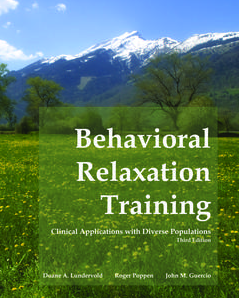
Behavioral Relaxation Training
What Is Behavioral Relaxation Training?
Behavioral Relaxation Training (BRT) is a behaviorally-based, data-driven method that teaches individuals how to engage in a relaxed state by focusing on visible, observable behaviors—rather than internal states. Originally developed by Dr. Roger Poppen and later refined by practitioners including Dr. John Guercio, BRT relies on modeling, imitation, and structured feedback to shape 10 clearly defined relaxation behaviors across various parts of the body.
The Behavioral Relaxation Scale (BRS), a validated measurement tool, allows trainers to objectively score the presence of relaxed behaviors. This structure makes BRT accessible, teachable, and replicable—making it an effective intervention for clients with developmental disabilities, autism, anxiety, and more.
To see these relaxation postures in detail, click the links below:
Behavioral Relaxation Training
How It Works
BRT focuses on 10 specific behaviors involving both gross and fine motor movements, such as:
Sitting still with back against the chair
Keeping feet flat
Keeping hands still
Keeping eyes gently closed
Maintaining steady, relaxed breathing
Training follows a structured order from large to small muscle groups to maximize learning and success. BRT has shown faster and more effective results than traditional relaxation methods, particularly for individuals with intellectual and developmental disabilities.
What People Are Saying
"In my career, I have found a handful of resources that I believe belong close at hand to every clinician, applied researcher, and student of human service fields. Behavioral Relaxation Training: Clinical Applications with Diverse Populations, Third Edition is one of them. I have always been very impressed with the simple elegance of BRT and its adaptability to the gamut of applications so well covered in this volume.
“The reader is immediately exposed to a view of the range of applicability of BRT. Each chapter subsequently exposes the reader to a review of the basic components of BRT, its research and clinical history, means for measuring relaxation, rules for relaxation, and of considerable importance, the role of the trainer. Chapters also have relevant supplements providing additional details of assessments and measures and other relevant information such as Behavior Analyst certification.
“The entire book is like BRT itself, simply elegant. It is easy to read, magnificently thorough without in any way being cumbersome, and at the same time, concise. It will be remarkably useful for clinicians and researchers to use it with a singular problem of focus, or with the panoply of disorders covered. It is a gift to clinicians and researchers."
—Dr. John R. Lutzker, Professor Emeritus, Georgia State University
"Behavioral Relaxation Training: Clinical Applications with Diverse Populations, Third Edition is a welcome update to a valuable clinical resource. It provides a rigorous behavioral conceptual and data-based methodological framework in a highly user-friendly manner, readily lending itself to practical application of the effective procedures to socially relevant behaviors. This latest edition expands the client populations and behavior challenges that are addressed, accompanied with supportive data.
“The authors candidly note the varying strength of the supporting data for various specific applications of BRT and set the occasion for continuing research with the procedures. A really nice touch is the provision for each chapter of items from the Behavior Analyst Certification Board Task List (5th edition) that correspond to the concepts and procedures addressed in it. Further, linking the rationale and procedures for BRT to basic behavioral research as well as to work done in non-behavior analytic framework adds to this book’s value. As a person who has been using BRT in my clinical work for years, I welcome this expanded presentation of work in the area."
—Dr. Gordon Bourland, Trinity Behavioral Services, Fort Worth, TX
Behavioral Relaxation Training: Clinical Applications with Diverse Populations (Third Edition)
By John Michael Guercio, Roger Poppen, and Duane Lundervold
This essential guide includes:
A deep dive into the origins and research behind BRT
The full 10-behavior protocol and how to teach it
Measurement tools like the Behavioral Relaxation Scale (BRS)
Clinical applications across a variety of populations
Trainer responsibilities and supervision best practices
In the Media: Learn More About BRT
Podcast: “What is Behavioral Relaxation Training?”
Dr. Guercio joined the Behavior Speak Podcast (Session 179) to talk about the origins, research, and real-world applications of BRT—including how it fits into broader behavior analytic practice.
“BRT is teachable, observable, and focused on client dignity and success. It’s one of the most powerful tools we have for reducing stress behaviorally.” — Dr. John Guercio



